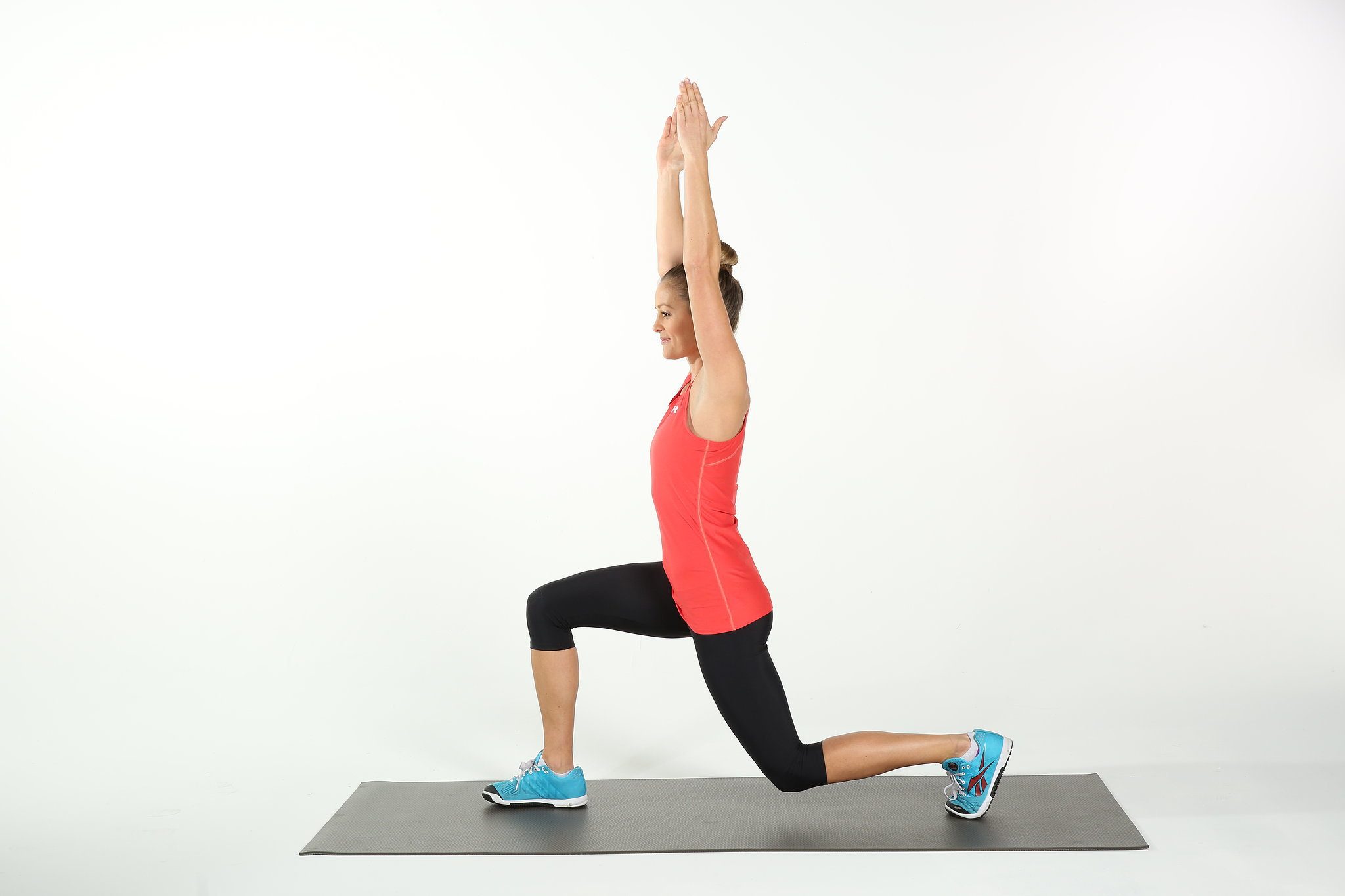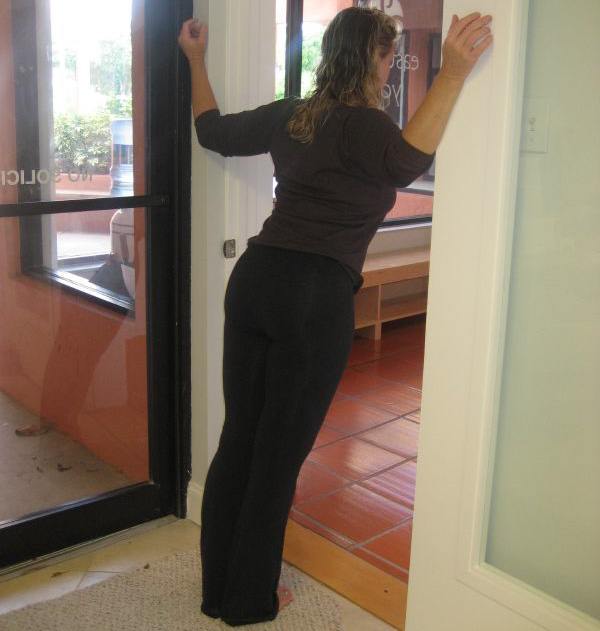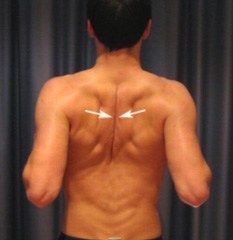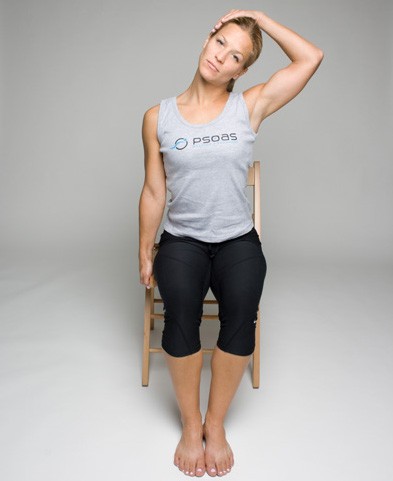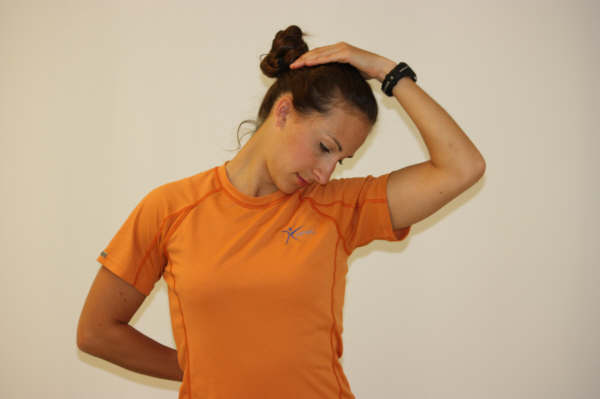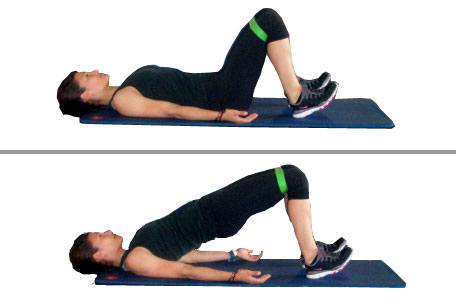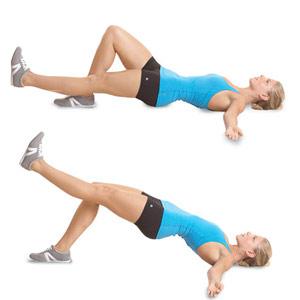Once that happens you’re going to start to “slide” into a really awful posture that has come to be known as Desk Jockey Posture. In fact there’s a good chance that you’re in the Desk Jockey Posture right now. Slumped over, shoulders rounded and pulled forward, hands internally rotated, hips rolled forward, low back in a stretched position.
Why is Desk Jockey Posture even a problem?
Because posture is incredibly important, both good and bad. As we sit in “good” posture for a long period of time the postural muscles become tired and we slide into Desk Jockey Posture so we can use the hard structures (the bones) for stability instead of the muscles. Do this enough and the body will change the length tension relationships of the muscles and consequently, the position of the bones in some of the joints will change. When this happens often enough for long enough, you adapt and lock in this new posture. The Desk Jockey Posture will become your new “normal” posture. Desk Jockey Posture contributes to a number of issues, some of them include:
Shoulder pain Elbow pain Neck pain Headaches Upper, Mid and Lower back pain Anterior (front side) hip pain Knee pain
What it comes down to is that this is an awful position to be in, especially when you’re spending hours at a time everyday in that position. But there are some very easy exercises that you can do almost anywhere that can help you “reset” into a more neutral posture.
1. Overhead Warrior Lunge
Get into a lunge stance with the hips in neutral (belt should be flat). Squeeze the glute on the same side as the leg that’s behind you and press the hip forward. Make sure you keep the ribcage down in neutral and reach overhead trying to pull the ribs apart. Each reach should unlock/ expand the ribcage a bit more. Be sure not to extend from the lower back.
2. Hip Flexor Stretch
www.youtube.com/watch?v=Hmec1bQBQOE Get into a lunge stance with the hips in neutral and ribcage down. Put pressure in the front heel, squeeze the glute on the stretched (knee on the ground) leg, and press only the hip forward. You can make this more intense by putting the back foot up on a bench, chair, or against a wall.
3. Chest Stretch
Stand in a doorway with the shoulders down in the joints. Hold your arms out (they can be bent at the elbow) and lean in keeping the ribcage down. Think about “opening” the chest.
4. Thoracic Extensions
These can be done over a foam roller or a hard back chair that comes one half to two-thirds up the back. Sit tall, natural arch in the lower back and chest up. Place the hands behind the head, elbows forward, and reach back over the chair or roller. Don’t just extend the neck/ look up. Keep the chin in a neutral position and extend the ribcage over the chair back or roller. Focus on “opening” the ribs and pulling them apart. The lower back should never move.
5. Thoracic Rotations
Start in a quadruped position:
On all fours Hands under shoulders, elbows locked. Knees under the hips Shoulders in the shoulder joint, chest up slightly
Place one hand behind the head, look at the elbow and rotate through the ribcage. Start elbow to elbow and rotate up as far as you can without moving from the lower back or shifting the ribcage. Quick Tip: If the belly button moves/ rotates, you’re moving from the lower back.
6. Scapula Pinches
Sit or preferably stand tall, with the shoulders down. Pinch the shoulder blades together in the back. Hold this fully pinched position for a count of one to five and repeat.
7. Trap Stretch
Sit tall, with the hips neutral and feet flat in front. Reach a hand up over the head and gently pull the head towards the shoulder. Don’t yank on your head, that could cause injury. The hand isn’t pulling on the head; it’s just assisting gravity a bit. Do this 1–3 times for 30–60 seconds at a time.
8. Levator Scapula Stretch
Set up the same as the Trap Stretch, but instead of facing forward, look at an armpit and gently pull the head in that direction. Again, 1–3 times for 30–60 seconds at a time.
9. Glute Bridge
Lay on your back; bring the feet up so that when the hips are fully extended (up) the knees will be a at ninety degrees. Keep the ribcage down, drive through the heels, sqeeze the glutes HARD and press the hips into full extension. Hold the top, really focusing on a hard squeeze, and return to the starting position. A lot of hip and low back pain is the result of weak, underactive glutes, and sitting all day in Desk Jockey Posture essentially shuts your glutes down completely. Simply performing a few glute bridges can not only keep them from shutting down completely, but these may help reset the sacrum and alleviate some hip and lower back pain. Be sure to focus on using the glutes and shutting down the hamstrings. If the two legs is too easy opt for the single leg version.
10. Scap Pushups
Get into a pushup plank position. Maintain this tight line and allow the scapula to move to the midline of the body as the torso falls. At the lowest point press the ground away and the shoulder blades to the outside of the shoulders.Make sure you keep your elbows straight, bending them will create false movement at the elbows and not the shoulders. Don’t think that these can be a cure-all. Simply doing these once or twice a day won’t offset 8 hours of sitting in Desk Jockey Posture. You need to me conscious of your posture through the day, continue to stay active, mobile and strong so you can maintain good posture for as long as possible and return to a neutral position easily. These exercises will, however, help to stem the tide of tissue creep and make you feel a bit better, maintain some mobility,open up some tight areas and activate muscles that shut down when we spend to much time being a Desk Jockey.
